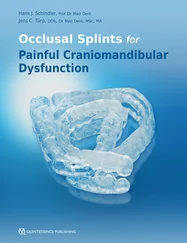The much more prestigious Golden Honor Award of the NSDAP was awarded specifically by Adolf Hitler to individuals who had offered distinguished service to the Party and state. The Nazis’ semi-official newspaper, the Völkischer Beobachter (People’s Observer), called it “the supreme badge of honor of the Party.” Though both gold party badges were quite similar in appearance, the Golden Honor Award had Adolf Hitler’s initials stamped on the back as well as the date of the award. Hitler awarded only 650 of the Golden Honor Awards during his time as Germany’s dictator. 2
If Oskar was a highly decorated hero, he said little about it. We do not know much about his life after his release from prison in the fall of 1938. He did consider himself a martyr and blamed his arrest and confinement on his own carelessness (Leitsinn, Leichtsinn ). He claimed he was now unemployed because his old firm was in Brno, which was in what remained of Czechoslovakia after the Munich accord. On November 1, 1938, Oskar applied for Nazi Party (NSDAP; Nationalsozialistische Deutsche Arbeiterpartei; National Socialist German Workers Party) membership. Sudeten Germans who had belonged to Konrad Henlein’s SdP were eligible for membership if they had been SdP continuous members since 1935. Though the Nazi Party accepted Oskar for provisional membership on February 2, 1939, the party’s district court raised questions about his numerous arrests in the 1930s, which Oskar had listed on his membership application. Using guidelines drawn up by Rudolf Hess in 1937, local party officials were to investigate each applicant to insure that their political attitudes were in line with those of the party. They also applied the 1935 Nuremberg Laws to each application, the Law to Protect German Blood and German Honor and the Reich Citizenship Law; this was to insure that the potential member had neither Jewish blood nor a Jewish spouse. Party functionaries also examined an applicant’s moral character. If an applicant’s qualifications for membership were in doubt, the matter was turned over to the local or district party courts (Parteigerichte), which would rule on the matter. 3
Eight months after Oskar applied to Nazi Party membership, Dr. Gerlich, a Nazi Party official in the Reichsgau Sudetenland headquarters in Reichenberg, forwarded Oskar’s application to the party’s district court (Kreisgericht) in Zwittau (formerly Svitavy) for further investigation. Dr. Gerlich said that the court should examine two matters: Oskar’s claim that he had been a continuous member of the SdP since 1935, and his police record. Dr. Gerlich said that the party district court should obtain a copy of Oskar’s criminal files from the district attorney’s office in Zwittau. He added that if they found only the convictions that Schindler had listed on his party application, these would not be enough to keep him from becoming a party member in good standing “if he is otherwise of good character and politically acceptable.” 4
Several days before the Czechoslovakians released Oskar from prison, German forces began to move into the Sudetenland. Initially, Svitavy was not included in the territory ceded to Nazi Germany, but that would change. The Munich Agreement stated that an international commission made up of Germany, Czechoslovakia, Great Britain, Italy, and France would decide on border disputes between Prague and Germany, Poland, and Hungary. One area of particular interest to Hitler was the Svitavy region, Schindler’s home district. An ethnic German island on the Bohemian-Moravian border, Svitavy rested at the center of the main rail links between eastern and western Czechoslovakia. Three days after the signing of the Munich accord, Hitler personally told the German negotiators to insist on this piece of territory in their border talks with Czechoslovak officials. By the time Oskar Schindler returned to Svitavy, it was about to become part of Germany. 5
Hitler Moves to Dismember Rump Czechoslovakia (October 1938–March 1939)
As Oskar recovered physically and psychologically from his jail term, Germany began its integration of the Sudetenland into the Third Reich. Konrad Henlein became Reichskommissar for the newly created Sudeten German territory (Reichskommissar für die sudetendeutschen Gebiete) and Karl Hermann Frank his deputy Kommissar. Reich officials began an immediate campaign of Gleichschaltung (reordering) to Nazify the Sudetenland. Almost 99 percent of the Sudeten German population approved this move during Reichstag elections on December 4, when they voted to support the Führer and the grossdeutsche Reich. An active policy to force non-Germans to leave the Sudetenland was connected with the campaign of Nazification. The SdP, which was integrated into the NSDAP on December 11, 1938, began a policy of intimidation against Czech and Jewish businesses. SdP members put signs reading Tschechisches Geschäft (Czech business or shop) and Jüdisches Geschäft on all Czech and Jewish stores and businesses in the Sudetenland. During the November 9–10, 1938, anti-Jewish Kristallnacht riots, the SdP led anti-Jewish demonstrations. The intimidation campaign worked. About 140,000 Czechs, including 12,000 Germans, fled the Sudetenland for Czechoslovakia in the months after the German takeover of this region. 6
If the Sudeten Germans thought that Hitler would bring them a better life, they were sorely misled. Though Germany was able to deal firmly with the region’s unemployment, it did so with a heavy hand. Nazi Germany was a dictatorship; Czechoslovakia a democracy. These differences became readily apparent to most Sudeten Germans over time. Many Sudeten Germans came to resent the arrival of the Reich German carpetbaggers, who dominated government and business. At the instigation of Karl Hermann Frank, the Germans purged many of Konrad Henlein’s old SdP associates, including his closest ally, Walter Brand, who spent some time in the Sachsenhausen concentration camp outside Berlin. After Germany occupied the rest of Czechoslovakia in March 1939, the Sudeten Germans began to resent what they felt was Reich German favoritism towards Czechs in the new Protectorate of Bohemia and Moravia, whom they wanted expelled from the region. Certainly Oskar Schindler was affected by Sudeten German resentment towards Reich officialdom during and after World War II. 7
In the midst of the Reich German effort to Nazify the Sudetenland, Abwehr officials debriefed Oskar Schindler and gave him some leave to recover from his imprisonment. They soon promoted Oskar and made him second in command of a team of Abwehr agents in Mährisch Ostrau (formerly Moravská Ostrava, Moravian Ostrava; today Ostrava) on the Sudeten-Polish border. One Czech investigation of Oskar’s activities in Märisch Ostrau suggests, though, that his position was so high in the local Abwehr organization that some of its agents considered him the practical head of its operations in the former Czech city. 8
During this interim, Hitler began to plan for the takeover of the rest of Czechoslovakia. According to Gerhard Weinberg, Wehrmacht officers in the Sudetenland heard of these plans as early as October 3, 1938. Within a week, military planning for the invasion of the remainder of Czechoslovakia was well under way in Berlin. On October 21, Hitler issued his directive to the Wehrmacht for the takeover of the rest of Czechoslovakia. It is now apparent that Schindler was involved in these efforts and was sent by Abwehr to Moravská Ostrava in early 1939 to help plan Germany’s takeover of the rest of Bohemia and Moravia. Schindler’s efforts, though, would be less significant than his later work in helping plan the invasion of Poland; Hitler was still suspicious of Admiral Canaris and Abwehr because they had not supplied the Wehrmacht with accurate information about Czechoslovakia in 1938. Instead, Hitler decided to force a political separation of Slovakia from the rest of Czechoslovakia by using SD terrorists in preparation for his takeover of the Czech lands. 9
Читать дальше












